3 Key Components to Mix the Best Garden Soil for Your Raised Beds
Improving soilRaised vegetable garden beds and containers are a convenient way to grow fresh, healthy produce right in your backyard. They offer better control over soil quality, improved drainage, and are easier to maintain than traditional in-ground gardens. However, one of the most critical factors for a successful raised bed garden is using the right soil. The right mix can ensure your plants get the nutrients, moisture, and structure they need to thrive, while the wrong soil can lead to poor growth and disappointing harvests.
In this article, we’ll explore what makes the perfect soil for raised vegetable garden beds, breaking down the essential components and offering practical tips to help you build an ideal environment for your plants.

Perfect Soil For Containers and Raised Beds
It may seem easier for you to just dig up some soil from your backyard and put it into pots for your garden, but this doesn’t really work. The soil from your yard is typically heavier and will clump together in a pot. This will create problems with drainage and root growth.
The type of soil you want for a container or raised bed garden will be light and fluffy, and contain a few crucial components for success.

Crucial Components for the Best Soil for Raised Beds
Here are the three things you should consider to create the best soil for raised beds and containers.
1 - A good soil base
You will need a robust base to work with in your garden. Topsoil is an excellent place to start; it is the top layers of soil that are more developed and nutrient-rich. You can buy this in bulk at your local garden center, or you could potentially use soil from your yard if you have completed some simple testing that returned sufficient results.
2 - Organic matter
Organic matter will be important to contribute and maintain the nutrients your garden needs. Peat moss or compost are both great ways to add organic matter to your garden.
Peat moss is a decomposed, fibrous material that typically comes from a type of moss called sphagnum - it can be easily bought at a garden center!
Compost is decomposed organic matter that can be made up of a lot of different materials. You can purchase ready-to-use compost that is generally made from animal manures or byproducts of landscape maintenance.
It’s also pretty easy to make your own compost from kitchen scraps and fallen leaves, we have another series of blog posts to get you started on that.
3 - Drainage
Getting the drainage right is the most important thing when working with containers and raised beds. Vermiculite, perlite, or coarse builder’s sand are all mediums you could add to improve drainage in these types of gardens.
The size of the containers you are gardening in may dictate what sort of mix you’ll use. If you are opting for a few circular pots for your apartment balcony, you may consider a soilless mix containing lots of different types of organic matter as well as a drainage component. But, if you are using a raised garden bed, it may be more cost-effective to use some sort of soil base since there is more space to fill.
Many garden centers sell pre-mixed media for any type of need you have. You can try one of these, or you could go for it and mix your own soil this year. We have our favorite soil mixes that you can try.

Common Raised Bed Soil Mistakes to Avoid
When creating the best garden soil for raised beds and containers, there are a few things to avoid.
- Using garden soil alone without amendments. Regular garden soil can be too heavy and may also need additional nutrients to feed plants in a small area.
- Overloading with sand or heavy clay soil. Having too much sand in a container can result in soil that doesn't hold water, and it will dry out too quickly. If there is too much clay, roots can be waterlogged and rot.
- Neglecting organic matter or proper drainage. Organic matter increases nutrients and allows for proper drainage and air. This also gives the soil the right environment for beneficial organisms to thrive.

Maintaining Your Raised Bed Soil Over Time
To keep your raised bed garden thriving year after year, it's important to maintain and refresh your soil. Over time, even the best soil mix can become depleted of nutrients.
Here are some key practices to ensure your soil remains healthy and productive:
- Add compost and organic matter after each harvest.
- Check and maintain soil pH levels.
- Use cover crops between growing seasons to help replenish the soil.
Raised beds and containers can be highly productive gardens. Creating and maintaining the best soil for your raised beds is the foundation for a thriving, productive garden. By starting with a well-balanced soil mix rich in organic matter, ensuring proper drainage, and replenishing nutrients over time, you set your plants up for success. Whether you’re growing tomatoes, cucumbers, or peppers, healthy soil will lead to healthier plants and better harvests.





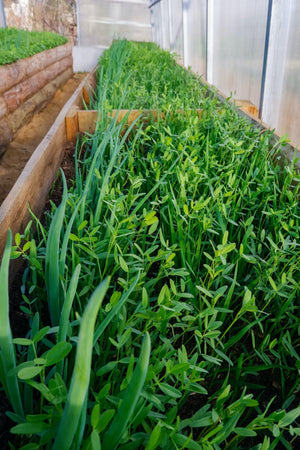
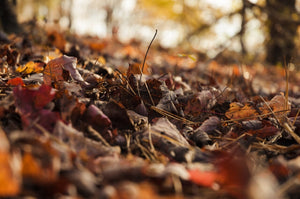
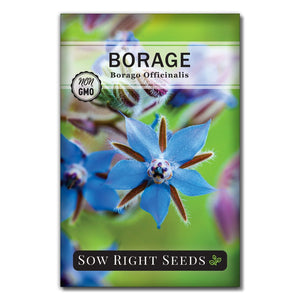
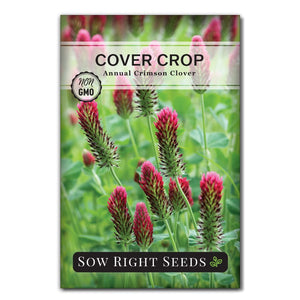
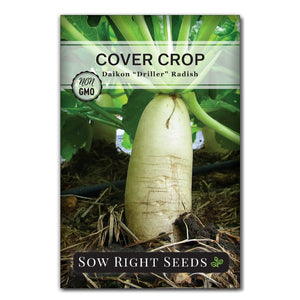
Peter – Thanks for your question. Our favorite mix ratio is: 45% Peat moss, 45% Compost, 10% Vermiculite. Stir these together and add a slow-release fertilizer.
We’ll add the link in the article: https://sowrightseeds.com/blogs/planters-library/seed-starting-and-potting-soil-mixes
The article never did give a recipe for mixing a good garden soil. Is it 50% peat moss, 25% chicken manure, 12% gypsum, 13% something else. Why no formula?
Leave a comment